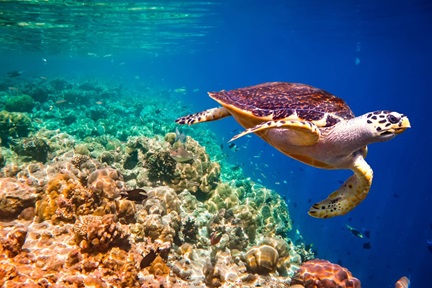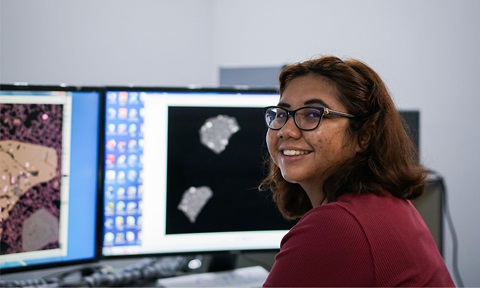Saving the fish in a time of environmental crisis
It is small, white and stone-like. Circular in shape, crusty edges. To an inexperienced eye, it would quickly be dismissed. Nothing new about this; surely no different from a slab of white concrete. But to fish biologists like ASE Professor Joyce Ong, this is much like a piece of gold — this is an otolith.
What? I wonder. Like protolith, the name of an unmetamorphosed rock we had learnt in Solid Earth? Or megalith, those large stones used in prehistoric monuments?
It turns out to be none of those. (Of course, after all, I’m speaking to an ecologist, not a geoscientist!) Prof Joyce spells out the word for me, then goes on to explain. An otolith is a calcified structure inside the ear of a fish. So tiny, and yet this ear stone is the key to unlocking many mysteries, like the age of the fish at death, which then is an indicator for the health of the fish population. Is the fish population growing, or shrinking? Was this a natural or unnatural death?
She was an undergraduate student, too, when she first discovered this gem. Since then, she’s dived into the world of marine biology and never looked back. (Especially exciting was the time she spent five weeks searching for nemo in the Philippines!)
Today, in her mid-late thirties, Prof Joyce specialises in fish ecology. This includes understanding the life cycle of fishes, their migratory patterns, or how climatic events affect fish populations. After all, from the temperature to the salinity of the water, so many factors influence fish populations.

Preparing ziplock bags to put the clownfish. [Photo: Joyce Ong]
However, the dearth of data about the Southeast Asian fish populations makes many fish populations vulnerable: many fish populations are potentially being overfished to the point of population collapse.
In other parts of the world, some fish populations have been on the verge of facing such a fate. One is the Orange roughy fish, found in the deep, cold waters of the Atlantic, Pacific and Indian Oceans. Another is the Atlantic cod, found off the northeast of the U.S. coast. Thankfully, some of these populations have recovered, since fisheries management realised that these populations had been over-exploited.
Indeed, in some areas in Southeast Asia, the marine habitats are degrading. In a dive a few years ago, Prof Joyce was shocked at the extensive damage to the coral reefs caused by the human litter, mostly plastic in origin. “This was supposed to be a coral reef, but now there’s just plastic trash everywhere, and the corals are dead… and all this trash wasn’t here the year before.” An entire ecosystem ravaged in a single year. Broken under the weight of the plastic products we mindlessly use. “This was the saddest dive of my life.”
As she says those words, a dull, familiar ache pulsates through my veins. A heavily littered seashore at East Coast Park springs to mind. We are all familiar with pictures of a pristine environment ravaged by humans, but when seen in real life, that melancholic feeling hits you again every time.
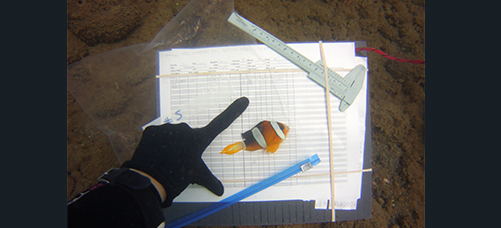
Measuring the clownfish. [Photo: Joyce Ong]
These experiences, good and bad, are why the sea continues to captivate Prof Joyce. Knowledge of these behavioural patterns and trends can pinpoint urgent places for conservation. For example, most coral reef fish have juveniles residing in different habitats such as the estuaries, seagrass beds and mangroves. Therefore, protecting coral reefs must be done in lockstep with protecting other habitats.
But it is no good, either, for the knowledge to accumulate just in the minds of scientists, she says. In the past, many in the scientific community were caught in their own bubble, because of all the jargon used, she says. Scientists have to communicate their findings better to the public; scientists must find a way to connect in a way that resonates with them.
Then, once there is awareness on which are the unsustainable seafood, action will follow. Less will buy fishes that are overexploited in their habitats. At present, there are many organisations issuing sustainable seafood certifications, such as the one certified by Marine Stewardship Council (MSC), by Aquaculture Sustainability Council (ASC) or by the World Wildlife Fund (WWF). There also many other sustainable seafood labels, such as the one indicating dolphin-safe tuna.
Do you have any regrets being in the job? Prof Joyce shakes her head firmly. There is nothing to get bored of here; the deeper you dive into the topic, the more questions you discover.
Speaking to Prof Joyce, I felt like I had just received a boost of optimism. If my professor had hope that the fishes can be saved in time, then I had no reason to be dispirited, either.
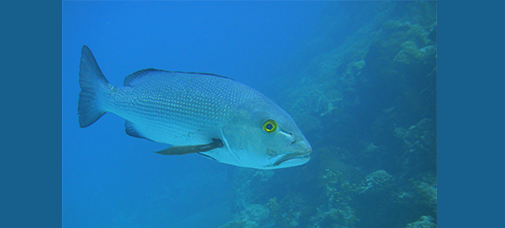
A snapper species, about 40–50 years old, studied by Prof Joyce. [Photo: Joyce Ong]



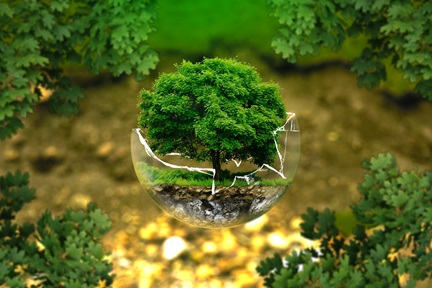
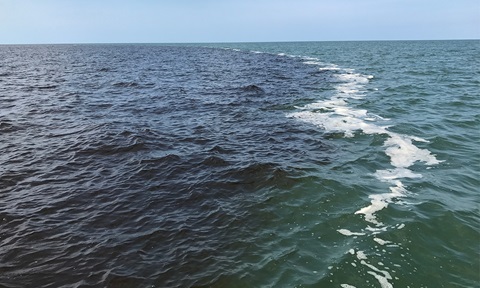
.tmb-listing.jpg?Culture=en&sfvrsn=cb08705a_1)
